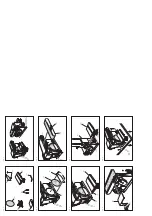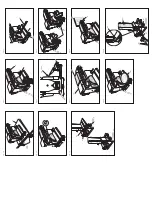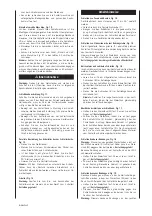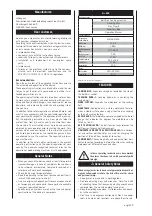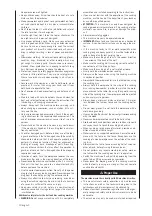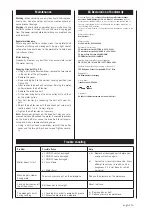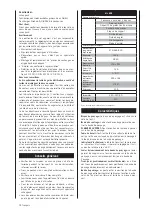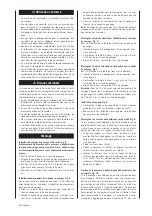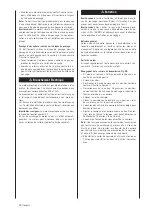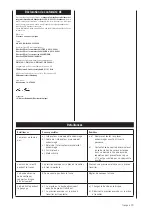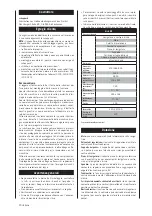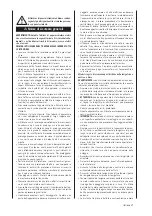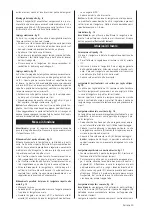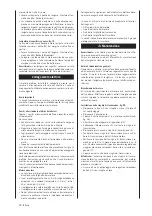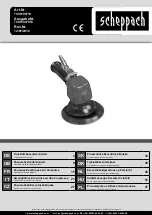
english 11
by trained persons who are familiar with the machine
-
ized modifications of the machine exclude a liability of
the manufacturer for damages resulting from the modifi-
cations.
parts and original tools from the producer.
manufacturer excludes any liability for resulting dam-
ages, the risk is exclusively borne by the user.
Remaining hazards
The machine has been built using modern technology and
in accordance with recognized safety rules.
Some hazards, however, may still remain.
and hands by improper feeding or placement of tools.
-
ing or feeding.
to electrical injuries.
may still remain not obvious remaining hazrds.
-
the entire operating manual.
Commissioning
Installing sanding disc and disc guard, Fig. 4
WARNING:
Do not connect to power supply until assembly
is complete. Failure to comply could result in accidental
starting and possible serious injury.
firmly into position.
disc, aligning holes as shown in figure 4.
disc guard into place.
Installing/Replacing sanding belt, Fig. 5.
On the smooth side of the sanding belt, there is a direc-
tional arrow. The sanding belt must run in the direction of
the arrow.
-
sion.
sure the sanding belt is centered on both drums.
tension.
Note:
The tension lever is spring loaded so use extreme
caution when pushing the tension lever back into place to
avoid personal injury.
Mounting the worktable for use with the disc sander, Fig. 6
To use the worktable with the disc sander:
mm) from the sanding surface.
Mounting the worktable for use with the belt sander, Fig. 7
To use the worktable for vertical sanding:
mm) from the sanding surface.
CAUTION:
To avoid trapping the workpiece or your fingers
between the table and the sanding surface, the table edge
should
NEVER
be further from the sanding surface than
Assembling work support, Fig. 8.
tool housing.
socket head screws.
Mounting belt/disc sander to work bench, Fig. 9
-
tion, it is recommended you secure it to a workbench or
to a workbench, holes should be drilled through the sup-
porting surface of the workbench.
mounted using holes in the base as a template for hole
pattern.
the base with holes drilled in the workbench.
washers and hex nuts (not included).
lock washers and hex nuts from the underside of the work-
bench.
Clamping belt/disc sander to work bench, Fig. 10
is recommended you fasten it permanently to a mount-
ing board that can easily be clamped to a workbench or
other stable surface. The mounting board should be of
in. (19 mm) thickness is recommended.
mounted using holes in the base as a template for hole
pattern.
Sander to Workbench.
If lag bolts are used, make sure they are long enough to
used, make sure bolts are long enough to go through holes
lock washers and hex nuts.
Adjustments
WARNING:
and the switch is in the OFF position. Failure to heed this
warning could result in serious personal injury.
Adjusting the belt tracking, Fig. 11
To check belt tracking:
the belt tends to slide off the idler drum or drive drum,
the belt is not tracking properly.
To adjust belt tracking:
-
Содержание 490 3302 924
Страница 3: ...Fig 2 Fig 3 Fig 4 Fig 5 Fig 6 Fig 7 Fig 8 Fig 9 A B C D H G E F A B C 1 3 1 2 5 4 D E D 4 5 E G ...
Страница 83: ...international 81 ...
Страница 84: ... ...



